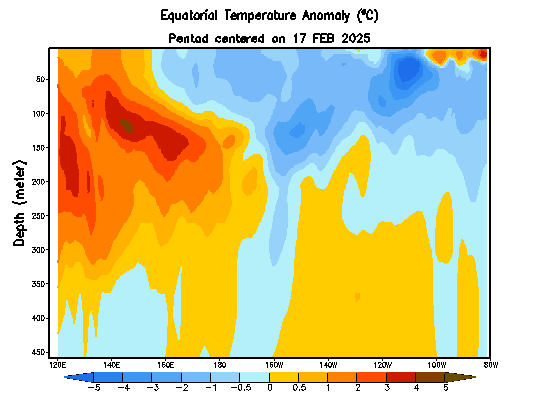Anomalously low lake effect snowfall is expected this winter.
The image above shows sea surface temperature anomalies across the Great Lakes, averaged out from August 11th to August 26th. In this image, we're able to get a view of SST anomalies across all five of the Great Lakes, something we can use to our advantage as we try to anticipate lake effect snow this winter. Let's go through each lake individually.
Lake Michigan
Lake Michigan is experiencing a generally below-normal summer, directly related to the extremely cold winter in 2013-2014. The middle section of the lake is experiencing anomalies a few degrees below normal, while the northern and southern fringes of the lake are observing generally above normal SST anomalies, though only by a few degrees. Lake effect snowfall for this winter in Lake Michigan is expected to be below normal.
Lake Superior
Lake Superior is seeing a well-below normal summer, again influenced by the very cold winter in 2013-2014. We see temperature anomalies approaching 6.5 degrees below normal in the eastern section of Lake Superior, though the western part is observing generally above normal SST anomalies. Because a strong fall low pressure system could easily eliminate those warm water anomalies, lake effect snow is expected to be below normal.
Lake Huron
Lake Huron is generally following the pattern of Lake Michigan, with the central portion of the basin seeing below normal temperatures. Above normal SST anomalies can be found on the outside fringes of the lake, but lake effect snow should be expected to be below normal this cold season.
Lake Erie
Lake Erie appears to be rather neutral across the board, with little to no noticeable anomalies to speak of in this body of water. As winter approaches and the air masses cool down, the lake should follow suit. Lake effect snowfall should be below normal this winter.
Lake Ontario
Lake Ontario is nearly completely below normal in SST anomalies as of mid August, so we can safely say at this point that lake effect snow should be below normal this winter.
Andrew
 |
| ESRL |
Lake Michigan
Lake Michigan is experiencing a generally below-normal summer, directly related to the extremely cold winter in 2013-2014. The middle section of the lake is experiencing anomalies a few degrees below normal, while the northern and southern fringes of the lake are observing generally above normal SST anomalies, though only by a few degrees. Lake effect snowfall for this winter in Lake Michigan is expected to be below normal.
Lake Superior
Lake Superior is seeing a well-below normal summer, again influenced by the very cold winter in 2013-2014. We see temperature anomalies approaching 6.5 degrees below normal in the eastern section of Lake Superior, though the western part is observing generally above normal SST anomalies. Because a strong fall low pressure system could easily eliminate those warm water anomalies, lake effect snow is expected to be below normal.
Lake Huron
Lake Huron is generally following the pattern of Lake Michigan, with the central portion of the basin seeing below normal temperatures. Above normal SST anomalies can be found on the outside fringes of the lake, but lake effect snow should be expected to be below normal this cold season.
Lake Erie
Lake Erie appears to be rather neutral across the board, with little to no noticeable anomalies to speak of in this body of water. As winter approaches and the air masses cool down, the lake should follow suit. Lake effect snowfall should be below normal this winter.
Lake Ontario
Lake Ontario is nearly completely below normal in SST anomalies as of mid August, so we can safely say at this point that lake effect snow should be below normal this winter.
Andrew







































